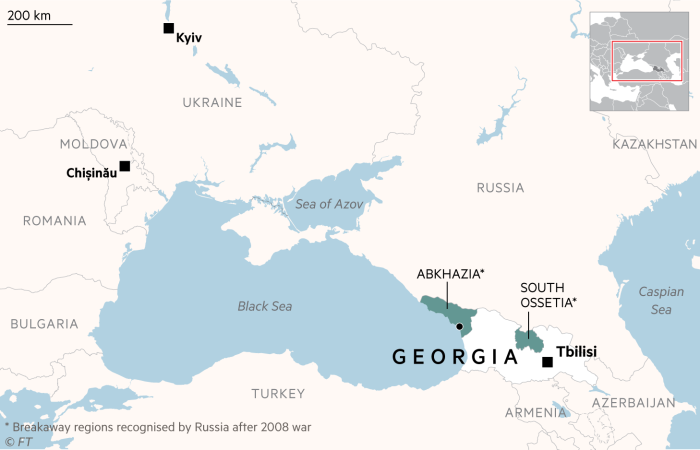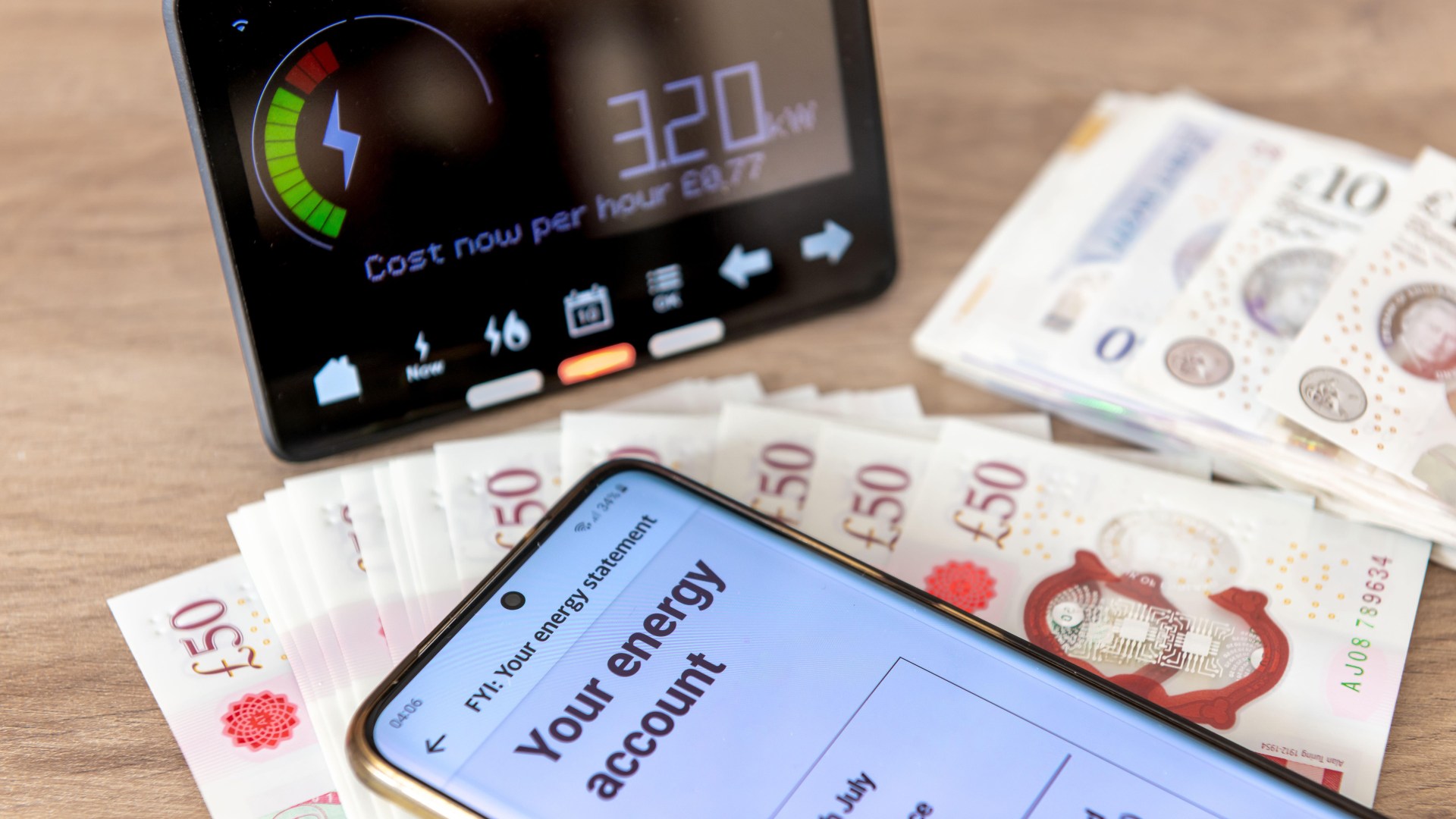It’s been a tough week for tennis line judges and (if you believe Elon Musk) taxi drivers.
Wimbledon, the oldest of the four Grand Slams, is bringing in automated technology next summer that will do away with the shrieked calls of “OUT” by those who have formed the human perimeter around the grass courts of the All England Club since 1877.
It fits with broader moves to make officiating in sport less subject to opinion, such as through semi-automated offsides in football and AI-powered points deductions for Olympic diving.
Aside from by the judges themselves, the march of tech could also be felt by Ralph Lauren, which has dressed Wimbledon’s line judges since 2006.
The “Wimbledon collection” produced each year by the US fashion label forms the bulk of the Grand Slam’s premium retail offering (a line judge blazer retails for £949). But from next year, on-court marketing of the tailored range could be limited to the umpire — who is typically seated, off camera and often obscured under an umbrella.
This week we’re attempting to read the runes from another big legal case in football, and ask what the immediate future holds for the WNBA as its record-shattering season reaches its conclusion. Do read on — Josh Noble, sports editor
Send us tips and feedback at scoreboard@ft.com. Not already receiving the email newsletter? Sign up here. For everyone else, let’s go.
Score draw heralds victory for sports lawyers

Following a week of spin and counter-spin, one question has reverberated around English football since the outcome of the recent arbitration between the Premier League and Manchester City was published: Who won?
Lawyers and pundits have tried to unpick the 175-page ruling on Associated Party Transactions — the commercial agreements between a club and companies related to its owner — during a bitter post-match analysis. The Lawyer has a very neat summary for those interested in the detail.
Both sides claimed victory, but here are the key findings from the independent panel of legal experts:
-
The Premier League’s existing APT rules are “unlawful” because they fail to take shareholder loans into account.
-
The process of evaluating APTs is also unlawful because it deprives clubs of some relevant information before decisions are made.
-
Some of the changes made to the rules earlier this year are in breach of competition law.
-
The decisions to block two of City’s sponsorship deals will need to be reconsidered.
However, the same panel concluded that the league does need a mechanism for assessing APTs in order to make the broader regime of financial rules work. As such, the panel endorsed the overall framework for preventing clubs using inflated sponsorship deals to boost their revenue, and so their spending power.
The true answer to the question of who won is unlikely to become clear for some time. The Premier League insisted that it can simply tweak its rule book swiftly; City claims a complete rewrite will be required. It is hard to know who is right until the changes are made, voted on by the Premier League’s 20 clubs, and (presumably) judged again independently.
The Premier League’s message this week — that a bit of fine-tuning is all that is required — echoes the response to recent judgments elsewhere in football.
When the European Court of Justice ruled late last year that Uefa and Fifa had acted unlawfully during their response to the European Super League, Uefa insisted its rules had already been updated so the verdict didn’t really matter. Similarly, Fifa said its regulations on player transfers was only in need of a light refresh following another ECJ ruling earlier this month. These positions will need to be properly scrutinised.
Perhaps the biggest takeaway from the City case (and the most recent ECJ ruling) is that taking the legal route is looking increasingly attractive to any club, player or stakeholder in football that feels hard done by.
As a result, we can surely expect more and more of football’s rules to be challenged in court. Indeed, a formal action against Fifa over the Club World Cup is set to be announced jointly by players union Fifpro and European Leagues on Monday in Brussels.
Regulations that have stood for years, even decades, will doubtless come under greater pressure as governing bodies are forced to defend them. Every defeat — however small — adds a little crack in the edifice that is the status quo.
Ultimately there is be only one clear winner from all this: sports lawyers.
What next after the WNBA’s blowout year?

The WNBA Finals began on Thursday after one of the most explosive seasons in the history of women’s basketball. In a best-of-five games match-up between two titans, the New York Liberty are making their second consecutive finals appearance in a bid for their first-ever championship, while the Minnesota Lynx seek their fifth title, after establishing a four-ring dynasty in the 2010s.
Off the court, it has been a transformational season for the league, led by the immediate impact of a rookie class featuring Caitlin Clark and Angel Reese. Two of the WNBA’s three media partners — Disney’s ESPN and Paramount’s CBS — averaged more than 1mn viewers per telecast during the regular season that ended in September, while its third partner, Ion, saw its average audience more than double over last year. The W had 154 sold-out games in 2024, up from 45 sell-outs last year. And the league is expanding, with a Bay Area franchise, the Golden State Valkyries, set to begin play next year, followed by new teams in Toronto and Portland. News broke on Thursday night, with W commissioner Cathy Engelbert announcing that the 2025 season will expand to 44 regular season games and the finals growing to a best-of-seven series.
Amid this transformational growth, two near-term business questions to consider for women’s basketball:
-
The next CBA. With a new media rights agreement between the league and its partners signed this year, eyes are on the WNBA players and how they might seek a bigger piece of the money flowing into the sport. The league is expected to receive media revenues of about $200mn per year beginning in 2026, up from $60mn per year. Salaries under the current collective bargaining agreement, ratified in 2020, top off at $242,000. The contract lasts until 2027 unless either side opts out; if players opt out by November 1, the contract would last through the 2025 season.
-
Do young girls wanna be like . . . Sab? As W players enjoy more name recognition, will signature shoes become sales drivers for brands such as Nike and Puma? The Liberty’s Sabrina Ionescu and Breanna Stewart both have eponymous shoes already on the market with those brands, respectively. Ionescu’s Sabrina 1 was the fifth most-worn shoe by men in the NBA this past season, according to KixStats, and was a rare sales highlight for an otherwise challenged Nike. Clark and reigning MVP A’ja Wilson both have forthcoming shoes with Nike.
Highlights

-
Rafael Nadal will retire following this year’s Davis Cup, ending one of the most glittering careers in the history of tennis. The 38-year Spaniard has won 22 Grand Slam titles, second only to Novak Djokovic.
-
Bernard Arnault and his five children have teamed up with Red Bull to take over Paris FC in the second tier of French football as the luxury billionaire expands his involvement in sport.
-
Spanish football has embraced Saudi Arabia’s growing interest in sport with two new sponsorship deals this week. Riyadh Season — the months-long showcase of cultural events in the Saudi capital — has become a global partner of La Liga, while Riyadh Air has bagged naming rights to Atlético Madrid’s stadium.
-
Where are you most excited about skiing this winter? Don’t know? FT Mag asked seven professionals. These are the slopes they chose.
-
Would you wear the world’s first inflatable bike helmet? Check out the demonstration here.
Transfer Market

-
Look away, Borussia Dortmund fans. German football coach Jürgen Klopp is coming back to football. A few months after announcing his departure from Liverpool FC, where he won the Premier League and the Champions League, Klopp has signed up to be global head of football at Red Bull. Starting in January next year, his job will be to oversee the group of clubs owned by the energy drinks company. Klopp said he sees his role as being a “mentor to coaches and management” within the group, adding: “I want to develop, improve and support the incredible football talent that we have at our disposal.”
Final Whistle

If Arsenal want any chance of winning the Premier League, they would be advised to protect winger Bukayo Saka from injury. So, it was something of a surprise to Scoreboard when footage emerged of mixed martial artist Conor McGregor unleashing a combo of kicks at the England star. Sure, the former UFC champ was just play fighting, but fans of the London football club would probably prefer a lower appetite for risk.
Scoreboard is written by Josh Noble, Samuel Agini and Arash Massoudi in London, Sara Germano, James Fontanella-Khan, and Anna Nicolaou in New York, with contributions from the team that produce the Due Diligence newsletter, the FT’s global network of correspondents and data visualisation team

















































































































































You must be logged in to post a comment Login